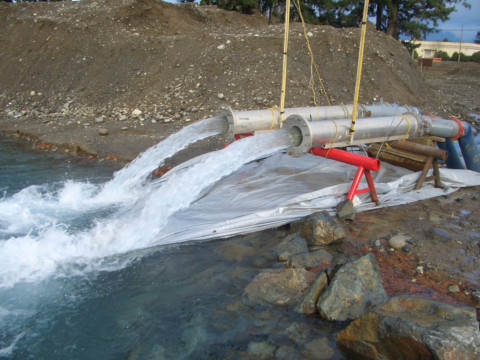EOSC 533 · Groundwater modeling in practice

Models of steady-state and transient groundwater flow in the saturated and unsaturated zones; applications to regional groundwater flow, groundwater recharge, subsurface contributions to streamflow, and aquifer evaluation; model calibration. This course is not eligible for Credit/D/Fail grading.
Syllabus
Course Overview
This course is designed to provide a comprehensive understanding of groundwater analysis through a problem-based approach. You will engage in realistic scenarios that mirror real-world groundwater challenges, incorporating activities such as defining study objectives, data gathering and interpretation, conceptual model development, parameter estimation, and predictions using analytical and numerical models.
The course will be delivered fully online, combining asynchronous and synchronous components to maximize flexibility and engagement.
Learning Goals
By the end of this course, you will be able to:
- Investigate a groundwater problem, including the ability to:
- Identify key issues and controls;
- Design data-collection programs;
- Construct a conceptual model of the site/problem;
- Analyze groundwater flow quantitatively with fit-for-purpose analytical or numerical models;
- Propose and assess management options;
- Quantify prediction uncertainties and their consequences for decision-making;
- Assess uncertainty and communicate risk in a decision-analysis framework.
- Critically evaluate a groundwater analysis.
- Communicate and defend your results in a presentation or written report.
Detailed learning goals are posted in each module.
Course Structure
Delivery Method
This course is delivered fully online, with:
- Asynchronous components: Most subject matter is delivered as written text, allowing you to learn at your own pace. Each module includes quizzes and questions, with a summary quiz contributing to your final grade.
- Synchronous components: We will meet online at 8 am on most Wednesdays for group activities, discussions, or Q&A sessions with industry experts.
Modules and Progression
The course is structured as a series of paced modules hosted on UBC’s Canvas learning management system.
- Each module outlines the activities necessary for completion and builds upon learnings from earlier modules.
- Deadlines are set to ensure steady progress and prevent falling behind.
Teaching Approach
This course adopts a problem-based learning model. You will be guided through realistic groundwater challenges, including:
- Definition of study objectives;
- Data gathering and interpretation;
- Conceptual model development;
- Parameter estimation and predictions using analytical and numerical models.
In addition, we’ll review the fundamental mechanics of groundwater flow and principles of numerical modelling to support your problem-solving skills.